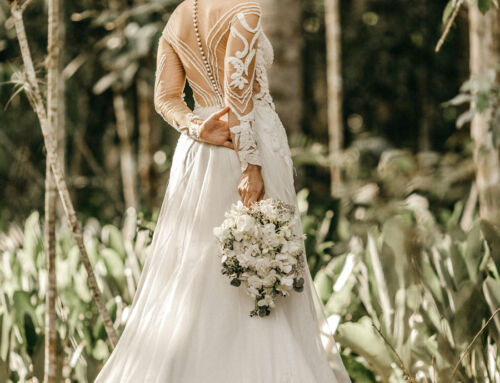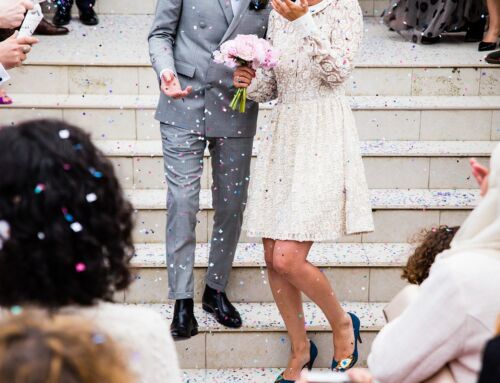
Before your big day, the perfect gown fit can make all the difference. Bridal alterations ensure your dress moves with you, flatters your figure, and stands up to hours of celebration. From hemming and bustles to custom sleeve additions, understanding common alteration types, timelines, and costs will help you plan confidently and avoid last‑minute stress. Below, we explore key alteration services, outline the typical alteration process, explain why professional expertise matters, and share preparation and budgeting advice so you can say “yes” to a flawlessly fitting dress.
Types of Bridal Alterations
1. Hemming & Train Management
Most gowns arrive with extra‑long hems to accommodate varying heights—shortening the hem is the single most requested alteration, ensuring you don’t trip or drag your train down the aisle. Adding bustle loops and buttons lets you lift or secure your train for dancing and mingling, with a variety of bustle styles (e.g., French, Austrian, waterfall) to suit your gown’s design.
2. Taking In / Letting Out Side Seams
Adjusting the side seams at the bust, waist, and hips creates a custom contour. Approximately 90% of brides require side‑seam alterations to achieve a snug—but comfortable—fit. Seamstresses carefully remove and re‑attach any lace or beading to preserve your dress’s decorative details.
3. Bodice & Corsetry Adjustments
Whether it’s adding padding, reshaping boning, or inserting a built‑in corset back, these modifications enhance support and smooth lines under the gown. Proper bodice alteration prevents gaping or slippage, keeping you confident from ceremony to last dance.
4. Customized Sleeve & Strap Work
Many modern brides choose to add sleeves or straps for modesty, comfort, or style. From cap sleeves and illusion lace to detachable straps or off‑the‑shoulder sleeves, these bespoke additions are hand‑stitched to match fabric and embellishments seamlessly.
5. Adding or Modifying Details
Personal touches—such as adding lace appliqués, repositioning pockets, or altering necklines—allow you to tailor an off‑the‑rack gown into a unique creation. These specialty alterations require extra time and skill, as each element must be aligned with the original design.
The Bridal Alteration Process
Initial Consultation & Fittings
Timing: Begin alterations 3–4 months before your wedding. Most seamstresses recommend purchasing your dress at least 6–8 months in advance to allow for ordering and alterations.
First Fitting: Measurements and initial discussions determine which alterations are needed. Bring your wedding shoes and undergarments for accurate length and support planning.
Subsequent Fittings
Second Fitting: After preliminary adjustments, you’ll try on the dress again to fine‑tune the fit. This is when bustles are positioned and minor tweaks are made.
Final Fitting: A week or two before the wedding, the last fitting ensures every seam and hem is perfect—no surprises on the big day.
Why Professional Expertise Matters
Entrusting your gown to a bridal‑specialist seamstress guarantees:
Preservation of Design: Delicate fabrics like silk, tulle, and lace require hand‑finishing techniques to avoid damage.
Seamless Results: Professionals match thread, stitches, and hand‑sewn finishes so alterations blend invisibly.
Reliability: Experienced bridal tailors know to schedule around peak wedding seasons to meet your deadline without rushing.
Preparing & Budgeting for Alterations
Plan Ahead: Book your seamstress when you order your gown; popular ateliers can be fully booked 3–4 months ahead, especially in spring and summer.
Cost Estimates: Basic hemming and side‑seam adjustments start around £200–£450, while complex work (re‑beading, custom sleeves, corsetry) can range up to £800–£1,500.
Allow for Extras: Bridal boutiques may bundle several services into a flat fee; independent seamstresses often price each alteration individually.
Aftercare Tips for Your Altered Gown
Try It On: Wear your complete bridal undergarments and shoes at every fitting to ensure consistency.
Handle with Care: Store your dress in a breathable garment bag and hang it by the loops inside the gown—not the straps—to avoid distortion.
Emergency Kit: Keep spare thread, a small sewing kit, and safety pins on the wedding day for last‑minute fixes.
Next Steps
Bridal alterations are the final—and most crucial—step to making your wedding dress uniquely yours. By understanding the types of services available, scheduling timely fittings, and budgeting appropriately, you’ll walk down the aisle in a gown that feels custom‑made. Ready to begin? Contact your trusted bridal seamstress today and secure your alteration appointments well ahead of the season’s rush!



 Serving: London & Greater London
Serving: London & Greater London



